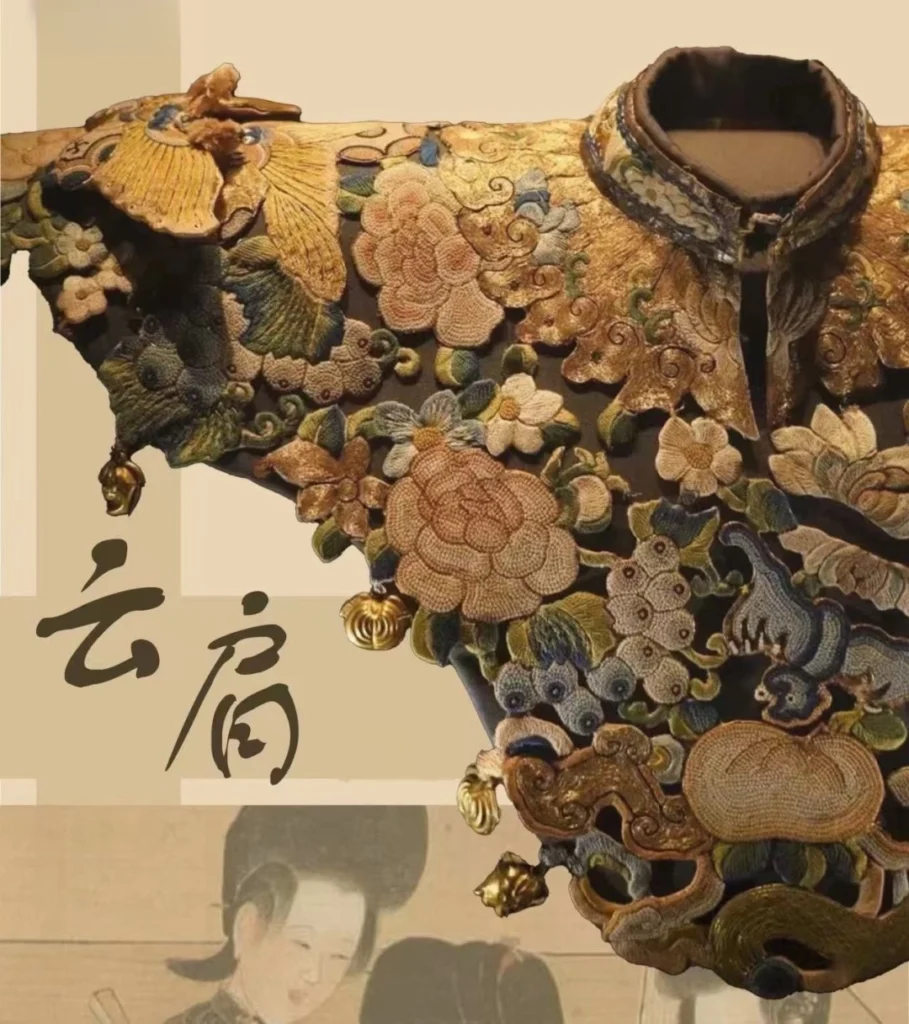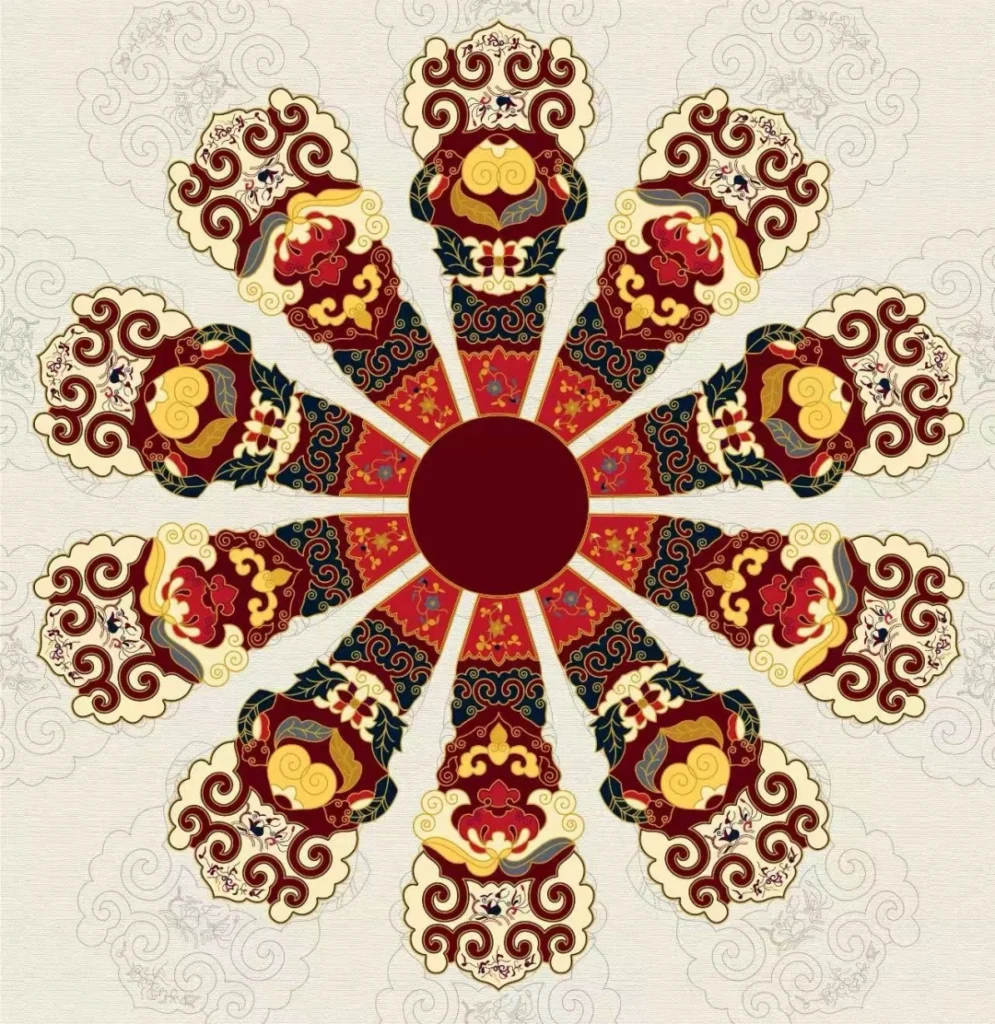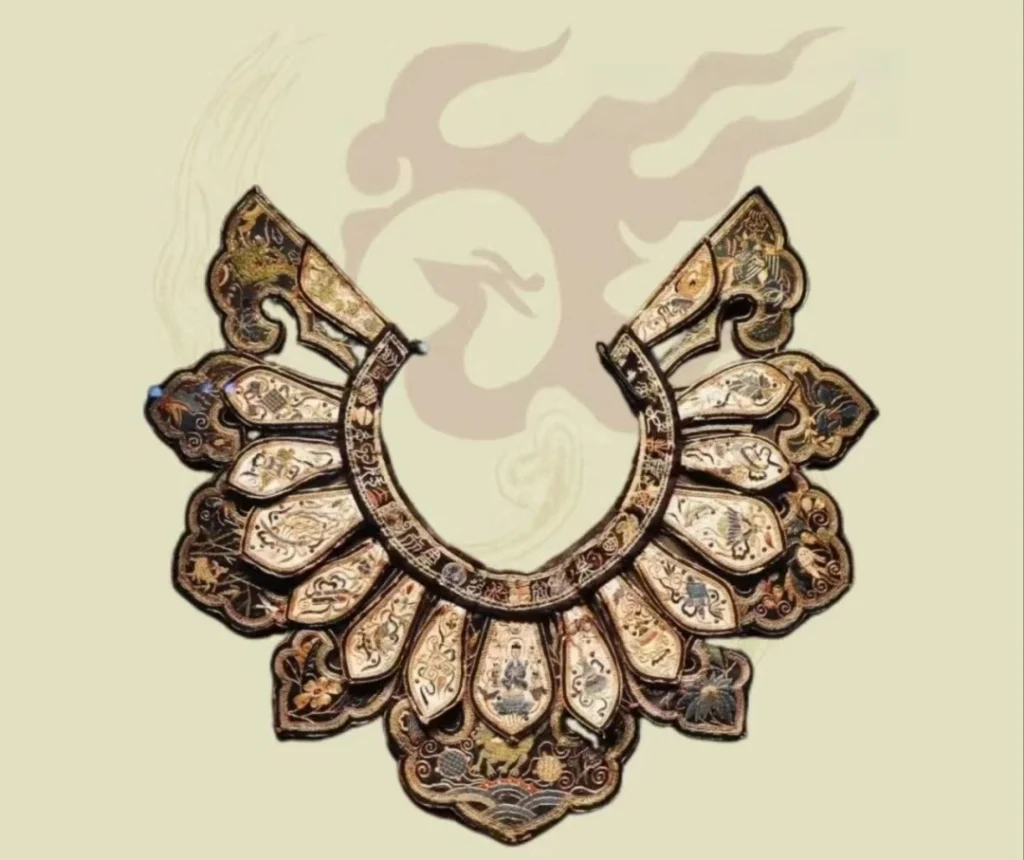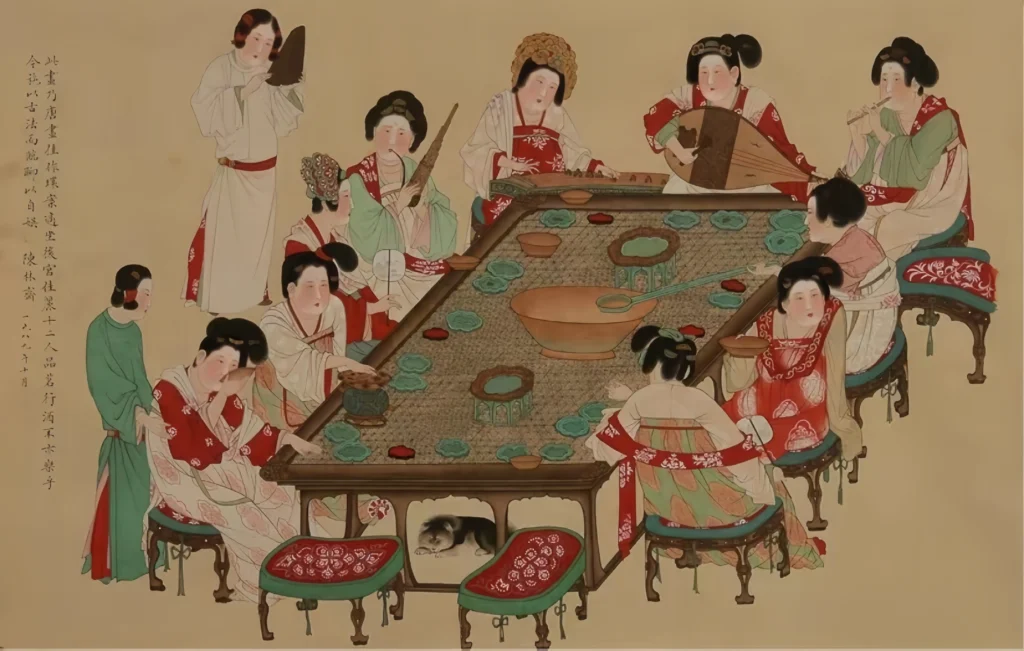The Beauty of Chinese Traditional Clothing: Cloud Shawl

Introduction
“Radiant like clouds glowing after rain, scattering rainbows in a clear sky,” the cloud shawl, a stunning and ancient decorative fabric, shines like a vibrant flower in the long river of Chinese clothing culture.
Origins and Development
The cloud shawl, also known as a “shoulder drape,” traces its roots back to the Qin and Han Dynasties, initially used to keep collars and shoulders clean. Over time, it evolved into a beautiful decorative accessory. From the Sui and Tang Dynasties to the Yuan Dynasty, cloud shawls appeared in ethnic minority clothing and ancient murals. By the Ming and Qing Dynasties, Han Chinese women widely paired them with their outfits, a trend that continued into the late Qing and early Republic era.

In the Qin and Han periods, cloud shawls were practical, protecting collars and shoulders. By the Sui Dynasty, Dunhuang murals showed early forms of cloud shawls, signaling their expansion in style and use, especially in religious art. During the prosperous Tang Dynasty, with vibrant cultural exchanges, cloud shawls became more decorative. Through the Song and Jin Dynasties, their craftsmanship and patterns grew refined. In the Yuan Dynasty, cultural blending broadened their use and audience, paving the way for their widespread popularity in the Ming and Qing periods.

Patterns and Styles
Four-Fold Ruyi Style
This style features four “ruyi” (wish-granting) cloud-shaped pieces joined front and back, forming a balanced, square shape. Symbolizing harmony across the four directions, it often consists of two layers with eight dangling clouds or ribbon-like variations. Made from silk brocade, it’s adorned with embroidered flowers, animals, or figures, connected by intricate knot patterns. Formalized in the Yuan Dynasty as part of official attire, it was used by both men and women. It peaked in the Ming and Qing Dynasties, becoming a key women’s accessory, with craftsmanship reaching its height in the late Qing.

Willow Leaf Style
A classic cloud shawl style, shaped like willow leaves, typically made of layered embroidered leaf-shaped pieces with floral or vine patterns along the edges. Formed by 8, 16, or 18 radiating leaf shapes, it symbolizes a vibrant spring and eternal life.

Round Floral Style
Centered around circular floral patterns, this style is surrounded by layered embroidered pieces, creating a rich, three-dimensional effect. Common motifs include peonies (wealth), lotuses (purity), and plums (resilience), reflecting aspirations for beauty and virtue. The combination of central flowers and surrounding layers evokes prosperity and abundance, embodying traditional Chinese values of good fortune and happiness.

Cultural Creativity
Cloud shawls spark a vibrant clash of traditional craftsmanship and modern design. Classic patterns like peonies, ruyi, and dragon-phoenix motifs are simplified and woven into contemporary clothing and accessories. They also blend beautifully into art and living spaces. Cloud shawl-inspired wall art, with vivid colors and delicate brushstrokes, brings cultural richness to living rooms. Pillows shaped like cloud shawls add a cozy, unique touch to sofas.

Beyond decoration, cloud shawls carry deep cultural meaning, reflecting Chinese philosophies like “harmony of man and nature” and the “balance of square and circle.” They showcase societal aesthetics, folk traditions, and women’s refined, understated beauty. Today, cloud shawl elements shine in fashion—think haute couture, photo shoots, runway shows, and red carpets. They also inspire home decor and cultural products like paintings, pillows, bookmarks, and phone cases, breathing new life into traditional culture.Explore similar designs at Victoria and Albert Museum

Conclusion
The cloud shawl, a timeless treasure of clothing art, carries the aesthetic tastes, life aspirations, and cultural wisdom of past generations. Glowing through centuries, it remains unforgotten despite countless changes. Today, as we gaze at the cloud shawl—its exquisite craftsmanship, rich patterns, and profound meaning—it lights up modern society, infusing fashion, art, and daily life with endless inspiration and vitality.





Responses